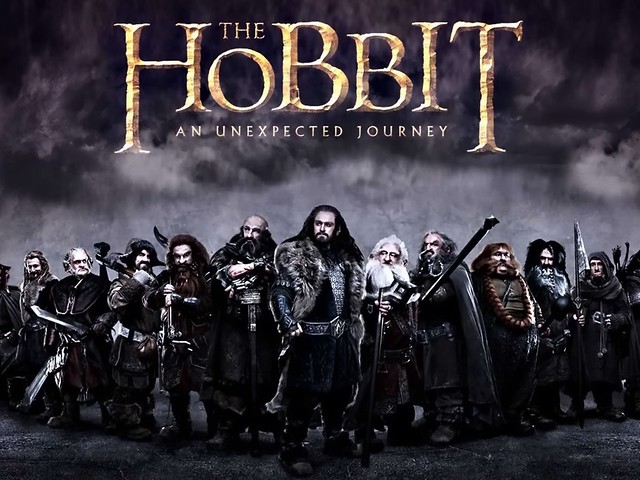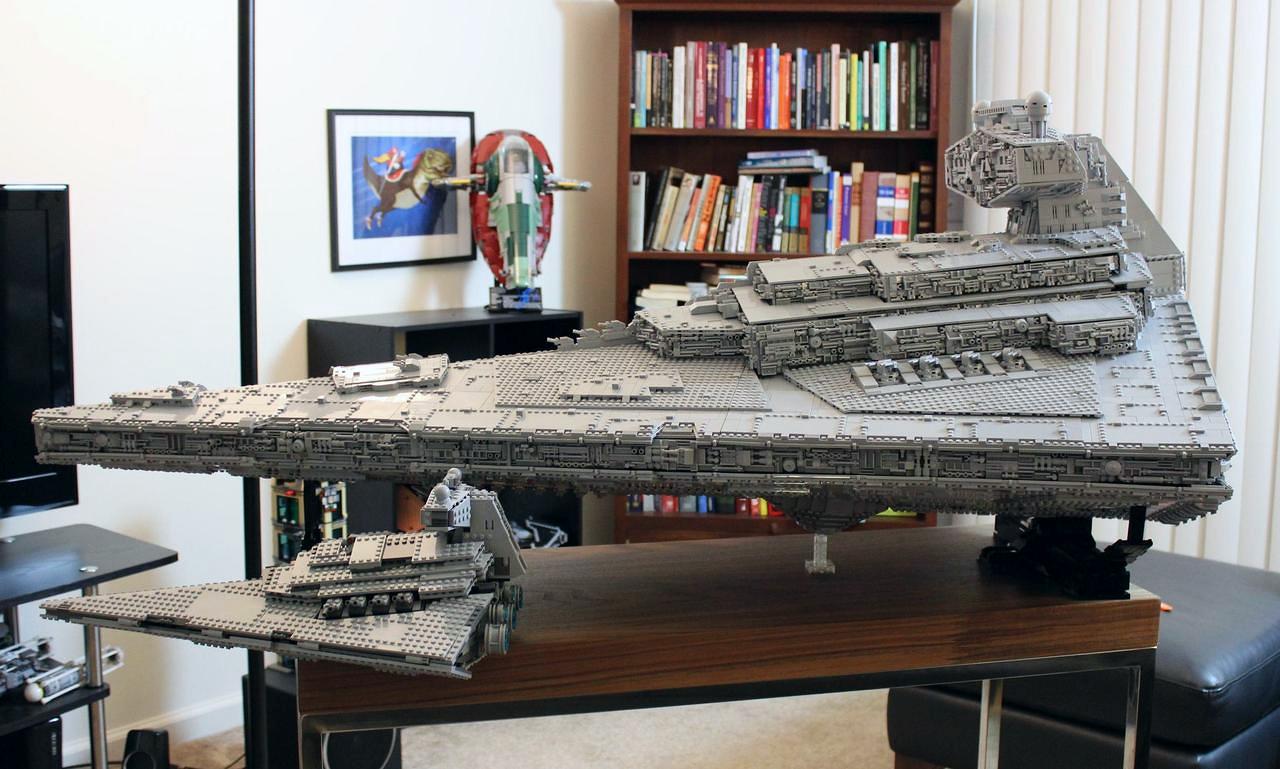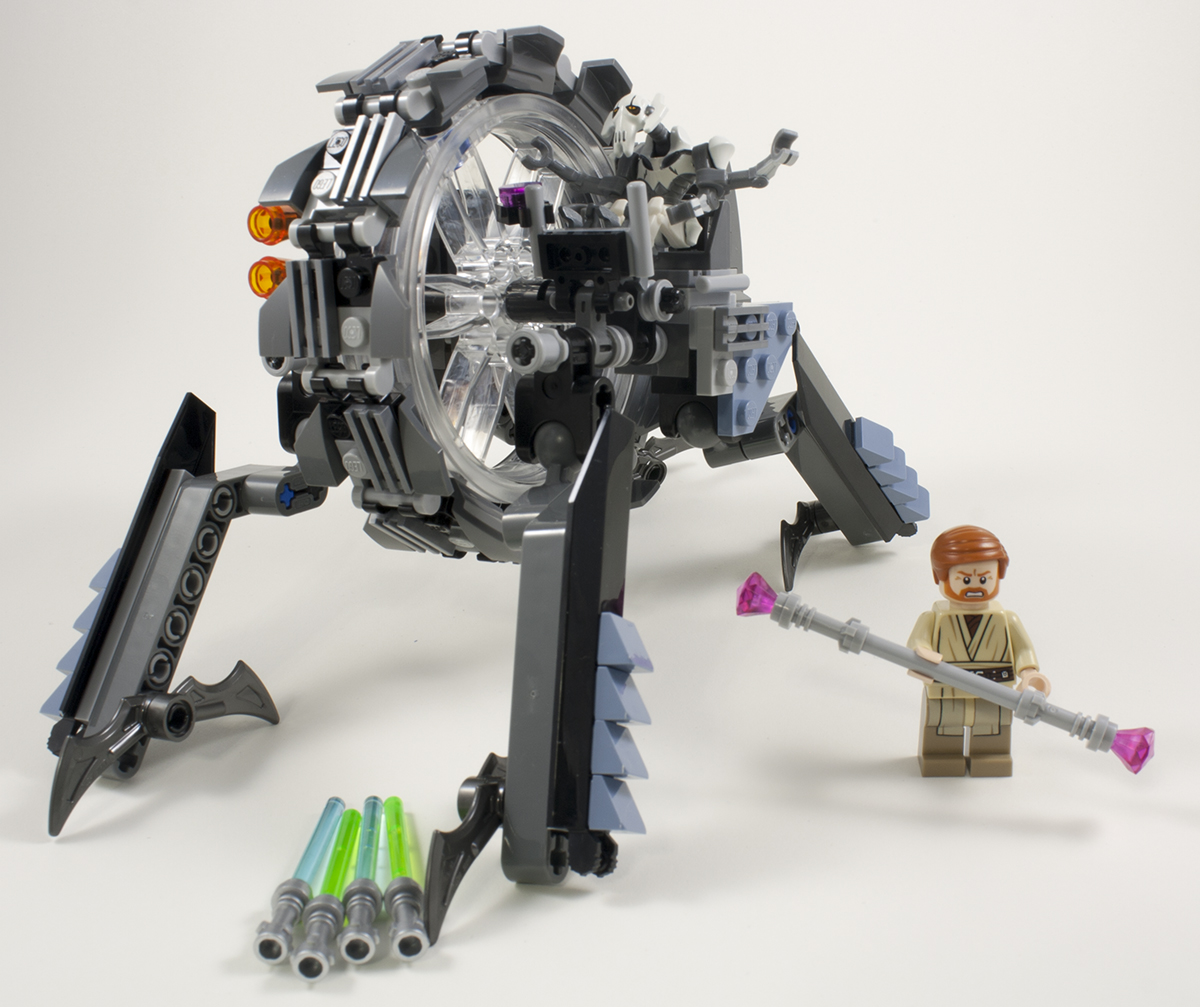Okay, I originally wanted to get this review done back when the movie was in theaters and fresh in everyone’s mind, but we’re going to have to settle for the upcoming BluRay release to refresh it for everyone! You know, life and what not.
After the achievement that was “The Return of the King,” the standard is set pretty high for The Hobbit. How do you follow-up the first Fantasy picture to ever win best picture?  I mean, come on, the Academy didn’t even give best picture to The Wizard of Oz (okay, granted, it was up against Gone With the Wind, Mr. Smith Goes to Washington, Stagecoach, and Of Mice and Men). More than that, how do you follow-up on the book that defined pretty much the whole of high fantasy after it? While The Lord of the Rings was an epic tale, The Hobbit is the granddaddy of pretty much all high fantasy.
While I reviewed a good number of the LotR sets, a sad confession is that I’ve never actually read the books. I’ve tried before, but I’ve always held that Tolkien was a brilliant linguist and a below-average writer. However, I did read the Hobbit twice… once in High School, and once in college for a Fantasy Literature class (never let it be said that a Creative Writing doesn’t have it’s uses… okay, say it a lot, because it’s very true, but that was a very cool class). And that experience really solidified in my mind that I felt about Tolkien the exact same way I felt about Michael Crichton: great ideas and concepts… but iffy stories at the very best.
Now that I’ve fired a broadside across fans of The Hobbit and Jurassic Park like, let me say that the movies that were born out of those ideas have been fairly awesome. The Lord of the Rings can be called a work of absolute art. It’s one of those movies that actually gets better when you peel away the illusion of how it was done (unlike, say, the PT Star Wars films that are basically a bunch of actors standing in front of a whole lot of green screens). More than that, the LotR trilogy captured the essence of what Tolkien put into his books (at least the stuff that I could bring myself to read), and it remains to be seen if The Hobbit can do the same.
Oh, and obviously, there will be some spoilers ahead. Read at your own risk. Also, there will undoubtably be jokes about walking… and it’s going to be a long, long, review (like a lot of the walking scenes).
The Hobbit is a whole different beast. It’s a single book, turned into three films, and while a lot of people read (or tried to read) the LotR when the movies were out, most people have read The Hobbit. It’s not just a fantasy book… it’s literature. And it’s something that most everyone who goes to see it is going to recognize some parts of. And we’re all going to get a chance to do that, since this is being stretched into three movies… somehow.
The movie opens pretty much the same way as Fellowship did, with some epic storytelling and laying down the background to everything that happened between  Sauron getting killed int he beginning of Fellowship and him not being dead and then being way dead at the end of the trilogy (before another hour of scenes closing out the movie).
Right away, there’s something just amis with the movie right at the beginning. The opening of Fellowship gives you the villain and scope right away, and he’s basically a no-show in the rest of the movie. The villain in the Hobbit is Smaug the Magnificent, a red dragon that basically inspired all of the fantasy art you’ve ever seen… but all you see of him in the opening is shadows and blurs. I get that they’re trying to basically tease us and build some tension into the other movies, but it comes off like when you’re watching a movie that doesn’t have the budget for a nice special effect and has to pan away to reaction shots of the actors instead.
Then the huge diversion from the book, with Frodo shoehorned in in a scene that’s supposed to be just before the start of Fellowship. Â The problem being, of course, that The Hobbit was written first and had very little connection to the trilogy. The trilogy had tons of retcons back to it, but the movies are going backwards, after all, so we get Frodo, Galadriel, and eventually Legolas (though he’s not in this one). Apparently we’re going to get three movies just out of the cameos.
Instead, we’re  treated (after some big scenes of a lot of dwarves walking and wandering the world) to a bunch of dwarves fighting around Moria… which again, is kind of curious, because this is something that wikipedia tells me was only mentioned in the appendixes for The Lord of the Ring (Tolkien loved his appendixes)…
We also get introduced to the villain more or less invented for this movie, Azog the Orc. Again, this was something only mentioned, like the battle. And it was mentioned in that he killed Thorin’s Grandfather (and giving a whole lot of motivation to the dwarf “king”). A big battle is fought, the dwarves win, take Moria, and will go on to die sometime before the Fellowship find them all turned to dust. So our main antagonist was based on a few lines in a footnote.
I’m not actually a big stickler for the whole “book vs. movie” argument… there are some stories that are simply better told in a visual medium, and the trade-off is that you don’t get all of the nuance and detail that a book affords you. Also, since this is Tolkien, you also don’t get subjected to a few chapters of dwarven songs. My earlier example of Jurassic Park is a great example where a movie just ends up doing a better job of bringing a story to life than the book could.
The Lord of the Rings trilogy took a light touch on changing source material. Don’t get me wrong… it certainly did. There are many pages out there on the internet dedicated to pointing out every time someone wore high green boots instead of low brown ones… but go read through them and you don’t find all that many Middle Earth-shattering changes to the story. More than that, the Extended Editions of the movies even added in a lot of those little details again.
An Unexpected Journey, however, starts out by adding things that weren’t in the book. Instead of being a movie based on a book, we’re now watching a movie connecting to a movie based on a book about a book. That’s pretty meta right there… and it doesn’t work. If you read the book, you’re expecting this to be about trolls, a dragon, and then eventually a battle between a lot of men, orcs, and dwarves.
There are some things that the movie does do right after such a shaky start. The whole “Unexpected Gathering” was just fun to watch. It sets the characterizations of the dwarves, which while different from their books, is still great to see. I’m not sure how I feel about Thorin being made into a tragic and reluctant hero instead of the petty, somewhat inept prick that he was in the book… but some of them are done well (like Kili and Fili).
The whole Bilbo taken aback and confused at the gathering is just great. There are also a few jokes that you wish would show up later in the movie, but they filled their quota here I guess. Much like the camera pans, the prop budget only included enough for a contract joke.
It also gives us an absolutely spine-chilling performance of Misty Mountains by the dwarf company. Yes, I made fun of all of the dwarf songs from the book (which, along with the needless explosion, is why I’ve never made it through the Lord of the Rings trilogy)… but when you hear the song…
Sure, FBTB started out as a a Star Wars site and all, so there’s going to be some preference to John Williams, but I’ll go on record saying that the Howard Shore scores for The Lord of the Rings movies, and now The Hobbit, are the best movie soundtracks made as a whole. The soundtrack for this movie, anything else aside, is absolutely top-notch. If you’re a fan of great instrumentals you should go pick it up now (Amazon has a good collection with several extended cuts and bonus tracks).
After the gathering though, we get right into some exciting Peter Jackson Walking Scenesâ„¢. Okay, it really starts with horse riding, and into the trolls. While it was mentioned by Samwise the Awesome (pretty sure that was his name), the troll scene was a big part of the book. It helped established Bilbo as an actual burglar… no, wait. In the movie, he’s just sneaking around and not trying to pickpocket them.
Instead, we get snot and poop jokes. Seriously. This was the first time in the entire movie that the thought “is this like when we first saw Jar-Jar in Phantom Menace and realized we were just cheated out of our ticket money.” I was just sort of waiting for one of them to go mesa sorry. Yes, in the book, it was actually a talking purse that gave away Bilbo, but that’s a detail you can work around. Worse, it was something that was ended with violence instead of Gandalf tricking them and playing on their stupidity.
Another character only mentioned as an aside, Radagast the Brown, who’s one of the other wizards. This is basically an excuse to make Gandalf look a bit unprepared for the whole “Sauron coming back” thing, while in the book that’s pretty much his whole reason for existing. Radagast is there to bring the Lich King’s sword and basically set up the movies we’ve already seen.
Then some stuff with elves… sigh. In the books, the elves were basically perfection. Tolkien really loved the elves. There was no real tension between the dwarves and elves, they were just guests. In the movie, layers of tension and hints that there were more than a few fist-fights just out of frame. Also, jokes about how bad the food is and something about chips. We also get more setup for Smaug being a tool of Sauron, apparently, and a chance for Cate Blanchette and Christopher Lee to show up. More Christopher Lee is always a good thing, so I’m a bit more forgiving there.

Once all of the name-dropping cameos are done, we get back to the story at large. The rest of this is closer to the book than the rest of the movie has been, with the Goblin Town and all that, but starts off with what is basically a demo reel for Weta Digital and some stone giants. Seriously, I have no idea what this was about… it wasn’t in the book, there wasn’t even anything really like it. I guess Peter Jackson just needed some good scenes with walking in mountains.
The actual “capture” in Goblin town doesn’t get much better, though things do pick up quickly. Instead of basically bumbling in to the goblins (which was a pretty big theme in the book… these weren’t battle-hardened dwarves, they were just a stream of accidents and screw-ups), there is a crazy fall that should have ended with the entire group basically splatters on bottom of the town, and captured.

Really, the whole thing was an excuse to split the dwarves away from Bilbo and show off some more digital effects with the amazing looking, and also disgusting, Goblin King / Great Goblin. The namesake for the set really sets the whole mood, and has a voice that makes you just want to pick up your phone and figure out who in the heck it is (it was Bruce the Shark from Finding Nemo… FYI).
As you can guess, it eventually ends in violence, but at least that’s how it worked in the book too, for once. It’s not an epic battle, sadly, it’s almost just comic relief at this point. But we do get to see Gandalf with a sword.
Bilbo goes off to play with everyone’s favorite character from the Lord of the Rings trilogy, Gollum. While there are a few liberties in the whole thing, it does a great job capturing the iconic scene in the book. Of course, we’re a couple hours in to this by now, so really, we’re just mostly numb. Spoiler… Bilbo gets the ring, they all escape, there are some wargs, and we’re going to get two more movies. And these will all eventually get turned in to “Extend Editions” for more fights, walking, and snot jokes. And the predictable (and terrible) tease of Smaug.
In the end… this is a hard movie to pin down. It feels good to get more Lord of the Ring goodness out there. But at the same time… there simply isn’t enough source here to make three movies. The original trilogy never felt as long as this, even though it most certainly was. It had depth that it drew you into the story.
The Hobbit: An Unexpected Journey? Not so much… instead of feeling like there’s a lot to cover, it feels like there’s a lot tacked on. Is it worth a watch, certainly. But if you’re looking for the same depth and awe that The Lord of the Rings brought us, we have to hope that the next installment can do it.

















![[SDCC] Collider Reveals LEGO DC Super Heroes San Diego Comic Con Exclusive Set](https://www.fbtb.net/wp-content/uploads/2015/06/LEGO-Superman-SDCC.jpg)


